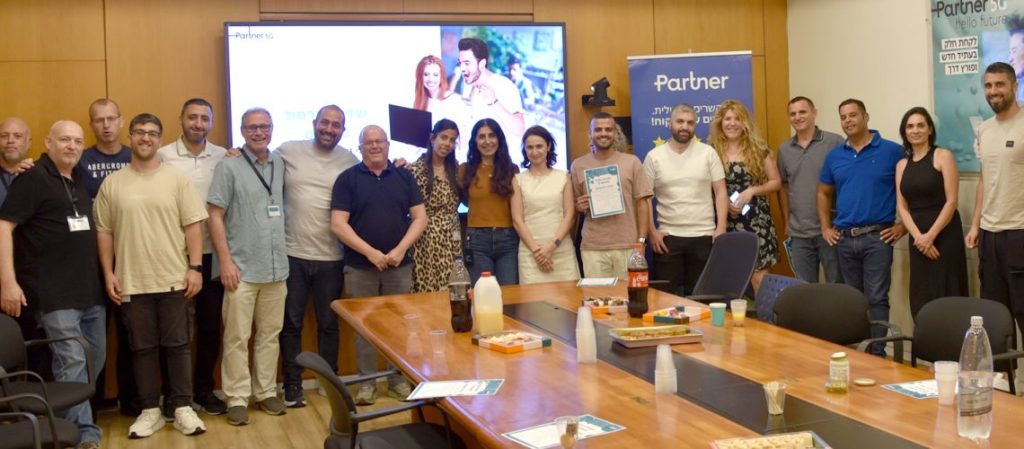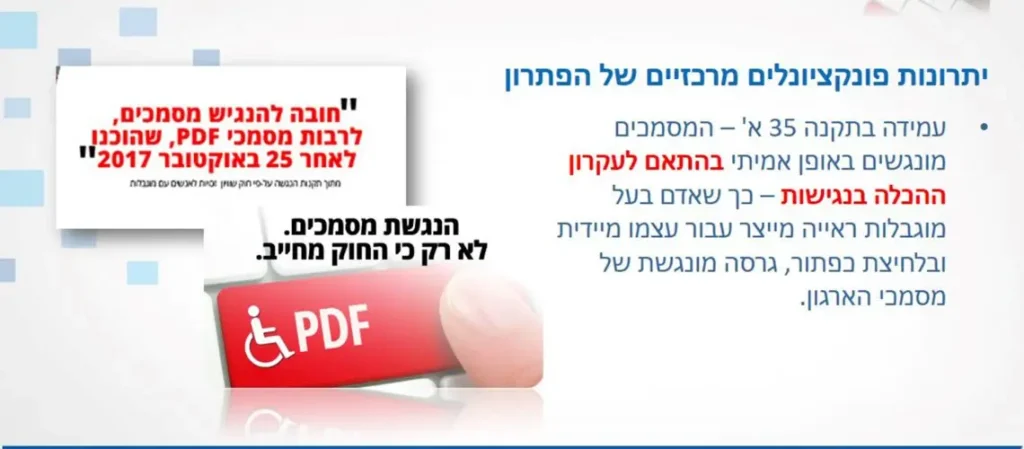At the end of 2021, the exemption that allowed organizations up to two weeks to provide accessible documents to visually impaired customers will expire, and soon they will be required to provide customer documents immediately upon request. How can this be done without incurring astronomical expenses?
In Israel, there are nearly one and a half million people with disabilities, making up about 18 percent of the population, and in recent years many actions have been taken to make daily life accessible to everyone. In 2013, Regulation 35 of the Accessibility Law for Equality of People with Disabilities came into effect, requiring organizations and businesses to provide accessibility adjustments for online services and to make accessible every document prepared from October 26, 2017 onwards.
An accessible document allows people with visual impairments to listen to its content using screen reader software. This can be done in PDF and HTML formats, but in both cases an “accessibility tree” must be created, meaning that screen reader programs will read them according to the order defined by the document creator. Since this process requires preparation, the legislator determined that for several years organizations could provide documents within two weeks from the date of request, rather than immediately. In 2021, this relief will expire and organizations will be required to provide accessible documents immediately.
For businesses and organizations, the change in the Accessibility Law requirements is significant, as they are now required to make thousands or even millions of documents accessible not individually, but in a repetitive and systemic way, according to the principle of accessibility inclusion.
The principle of accessibility inclusion states that a person with a disability should be able to operate in public spaces like any other person without a disability, so that everyone can manage independently without needing assistance from another person. For example, a restaurant that installs a ramp allowing wheelchair users to go up independently applies the principle of inclusion. In contrast, a restaurant that assigns an employee to carry wheelchair users up the stairs does not. This principle also applies to documents: true accessibility must allow a visually impaired person to immediately listen to any document they need without having to ask the organization or business for help.
Relying on Master Templates
The idea behind the law requiring accessible documents online is correct and essential, both socially and in terms of business and marketing, but it requires organizations, especially those with thousands or even millions of documents, to implement an advanced systemic technological solution. On one hand, the solution must enable efficient accessibility of documents without causing astronomical expenses for the organization, and on the other hand, it must allow people with disabilities to receive an accessible document immediately, on demand, and at the click of a button.
As mentioned, at the end of 2021 all businesses and organizations will be required to provide accessible customer documents immediately, so it is no surprise that many are seeking a technological solution that will allow this at a reasonable cost.
What is needed is a module of a smart digital forms system that provides a repetitive accessibility solution consisting of two stages. The preliminary stage is done using the system’s Designer for creating digital and accessible documents. During this process, the organization, using the PB Digital system, creates master templates for all types of forms and documents it has. These templates contain all the objects in the document – titles, subtitles, free text, tables, images, and more. After all the organization’s documents have been classified according to their structure and an accessibility template has been created for each type, the accessibility engine can be activated, allowing visually impaired customers to generate, with a click of a button and immediately, an accessible version of any document.
When a request for an accessible document is made by the user, the PB Digital system’s technology loads the regular PDF document, processes it through the accessibility engine that reads the relevant template, and immediately generates an accessible document that can be read by screen reader software.
The solution’s architectural design, which provides Accessible Document Service as a Service, enables organizations to significantly save resources and greatly reduce the amount of data transmitted over the network, but no less important – to provide their customers with the most advanced and respectful service experience, in compliance with the law and the principle of accessibility inclusion.





